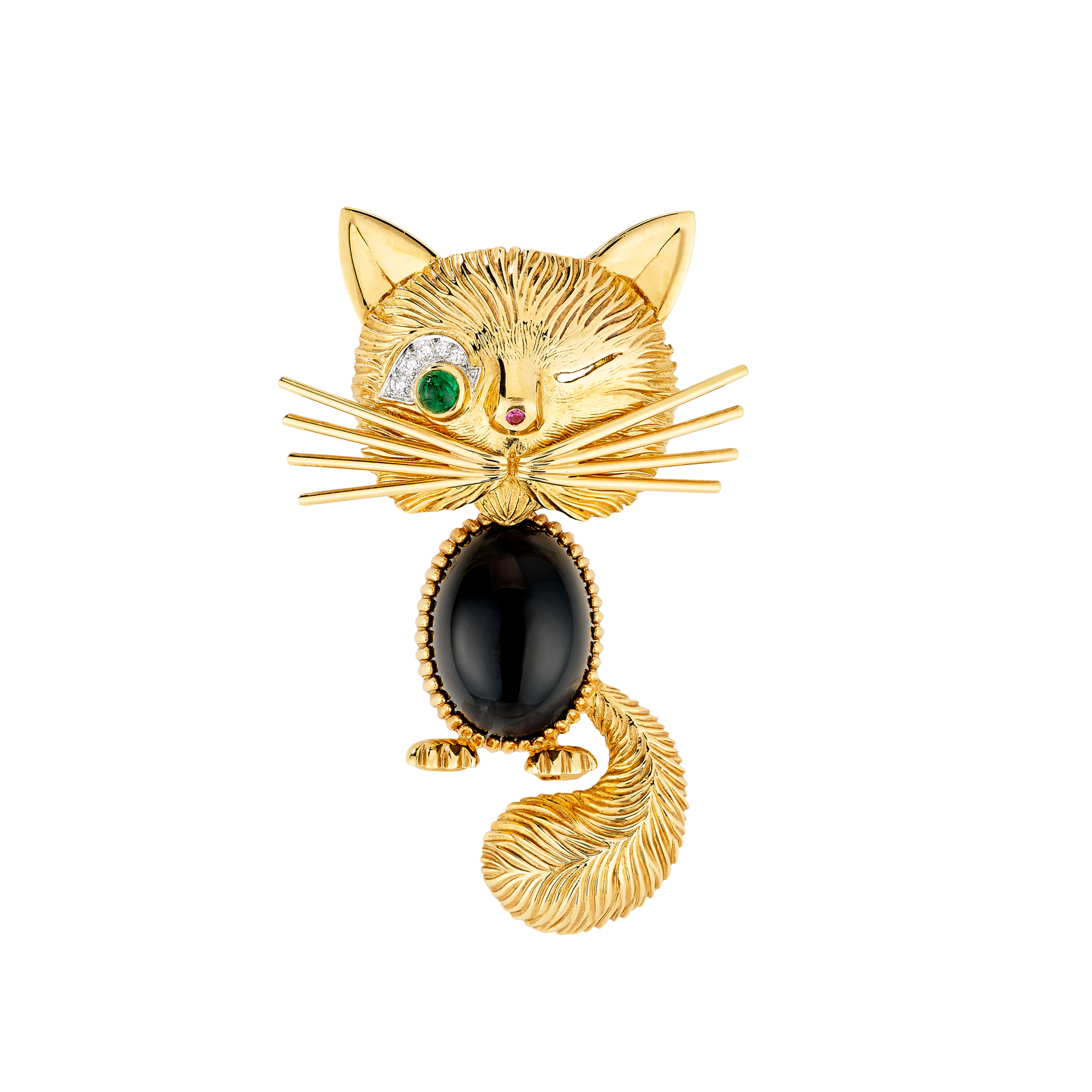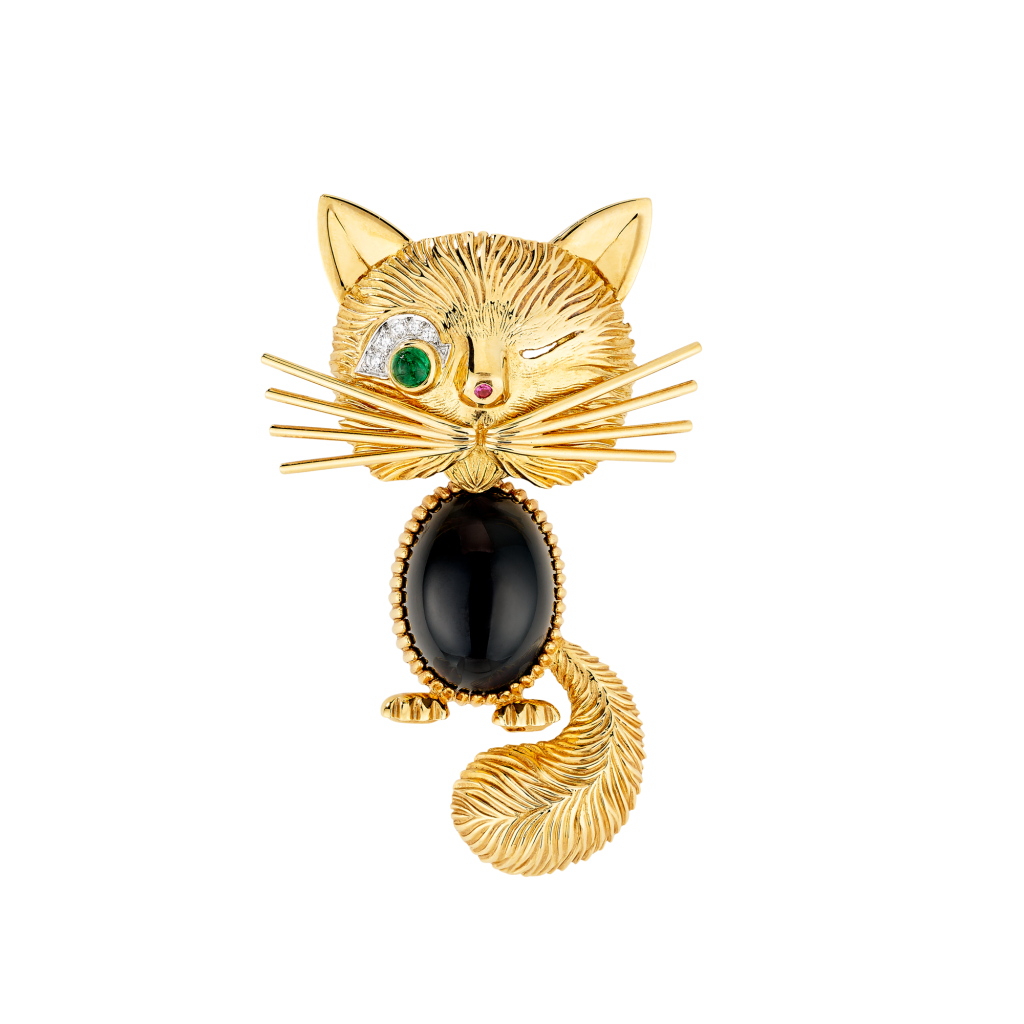
Winked Cat clip
Creation details
- Creation year 2007
- Stone Diamond
- Stone Emerald
- Stone Onyx
- Stone Ruby
- Material Gold
- Material Platinum
- Usage Clip
- Dimensions 52 × 35 mm
Pursuing its stylistic exploration of animal iconography undertaken since the 1940s, Van Cleef & Arpels created the Winked Cat clip in 1953, later nicknamed “mischievous”.
This stylistic culmination heralded the Boutique’s prolific series of animal clips. The example reproduced here is a revised contemporary edition of the original 1950s model, with a few modifications. The animal’s body is composed of an oval onyx cabochon inserted within a gadrooned yellow gold mount; its yellow gold head is engraved to portray its striped fur. One of its eyes is depicted with a bezel-set emerald enhanced by an eyelid paved with brilliant-cut diamonds, while the other eye is merely portrayed with an openwork line in the metal, giving the animal great expressivity. Indeed, the cat appears to be winking at us. Its nose is emphasized with a round ruby, while four pairs of whiskers in yellow gold thread complete its head. Its two back legs, on which it stands upright, are modeled in polished yellow gold, as are its ears. Finally, its tail, which curls out from the onyx cabochon, has a similar engraved finish to the head.
The formal simplification of animal clips
The preparatory drawings of the animal clips from the 1940s and 1950s display a range of formal and material experimentation. Studies on prototypes were conducted to reduce the final cost of the jewelry to make it affordable.

The Winked Cat underwent slight stylistic variations. The first sketch of this black cat, made in December 1953, depicts it with ears encircled with brilliants, one eye adorned with a large oval cabochon, four polished gold legs simplified as commas, and a tail in the form of a plain volute. A few months later, a diamond-covered eyelid was added to the cat’s face, which itself was more rounded with more clearly depicted fur. Only the lower legs were retained to provide a clearly feline silhouette.

The codes of comic strips and animated cartoons
The Maison borrowed certain elements from comic strips and animated cartoons, notably the exaggerated anatomical proportions and human expressions of small animal figures. These small creatures dreamed up by the Maison were in no way copies of well-known characters, but they displayed the codes and efficient simplification of form developed by cartoon designers. A series of animal jewelry emerged from these early trials that was to considerably enlarge the Maison’s clientele thanks to its references to popular culture.
The success of these “youthful pieces” from the 1950s through to the 1970s would give rise to a new way of marketing jewelry that had its own advertising terminology and a dedicated space: the Boutique, located at 22 Place Vendôme. In this way, the Mischievous Cat marked Van Cleef & Arpels’ creative and commercial entrance into the second half of the twentieth century.

To go deeper




